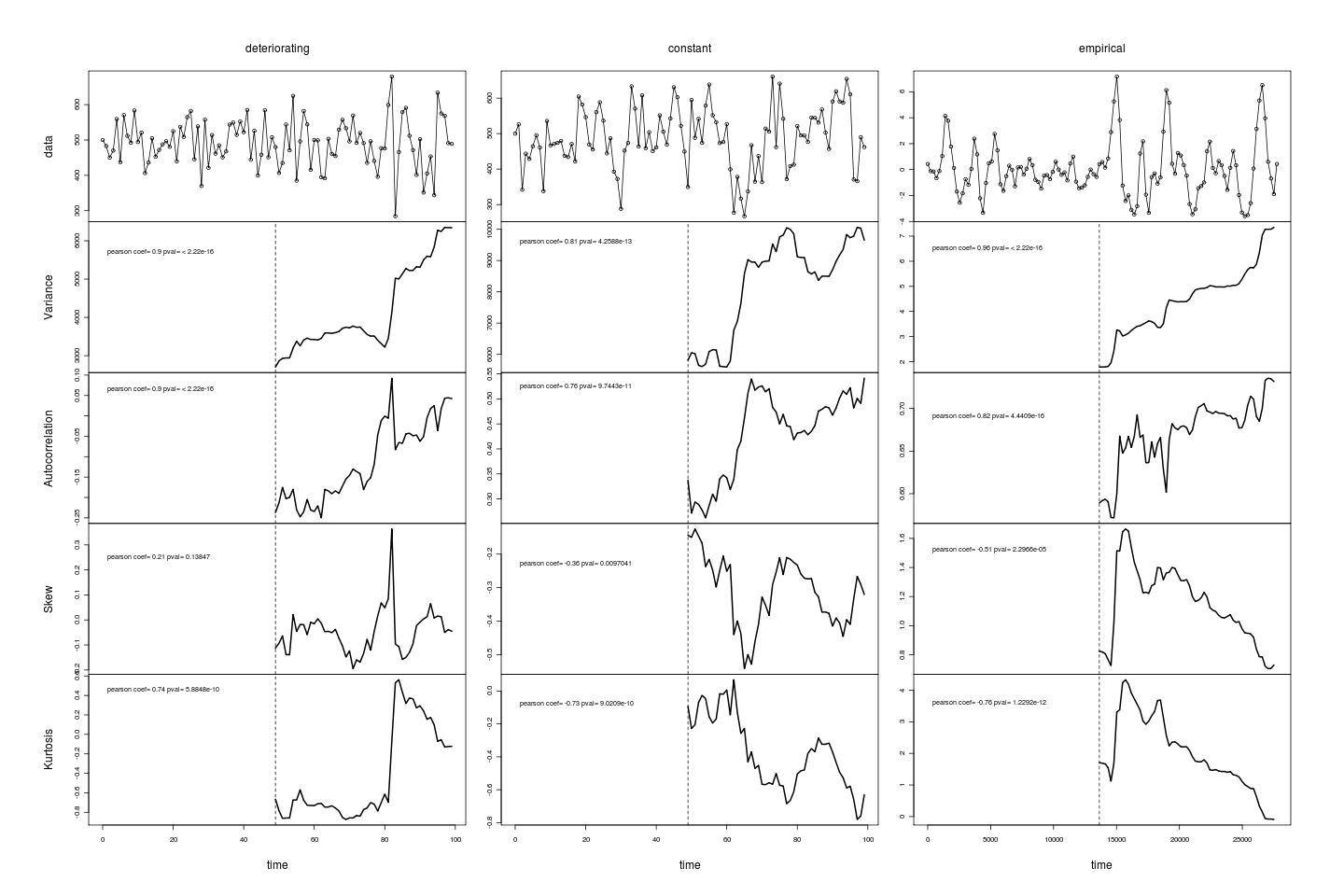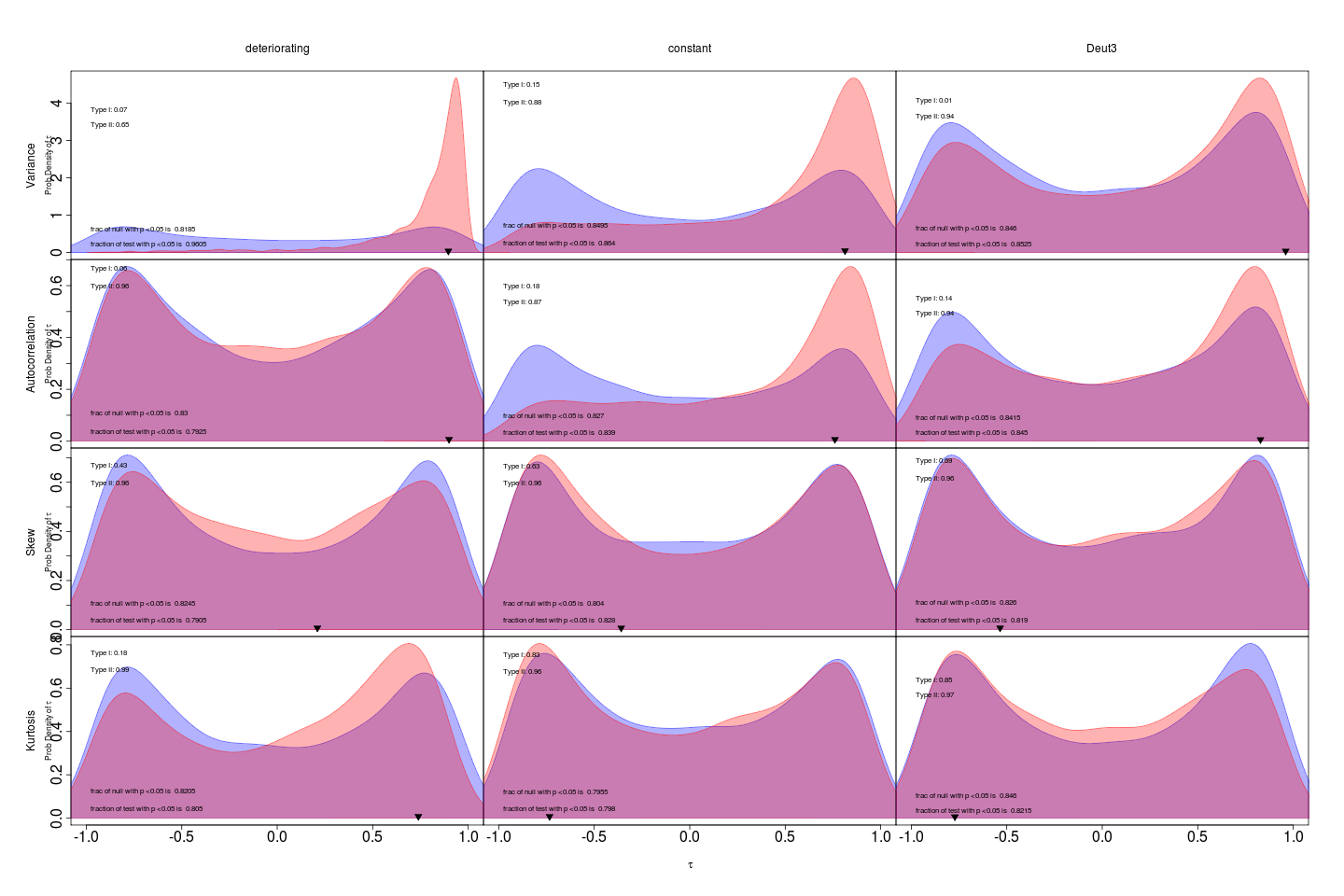Read over Scheffer’s rather nice introduction(Scheffer, 2010) to the Drake paper(Drake & Griffen, 2010). Last paragraph is particularly pertinenant:
Clearly, we have just scratched the surface in exploring the possibilities and limitations of this emerging field. However, the prospect of identifying generic indicators is exciting, as the approach may provide an independent way to assess the risk of critical transitions. Expansion of our toolbox for prediction is especially welcome given the almost insurmountable problem of modelling complex systems in a quantitatively accurate way.
Appendices
Continuing to write and organize the supplements
Correlation Tests
Still a bit uncomfortable about the replicates discussion. even with replicates you don’t satisfy the assumptions of Kendall’s tau, because it’s a rank test and needs independence. Pearson’s test is just as troublesome, as X and Y are assumed to be normal random variables. Certainly some appropriate temporal test would be best, such as fitting an autoregressive models, which is essentially what we are doing for the null anyway, (with more precisely correct parameterization for the changing-stability model). Not sure what to say about this.
p values no better an indicator on pearson than on kendall, though null is sensible in replicate(?) though not on individual. i.e. distribution of Pearson’s test statistics:


Alan Edits
Got edits back from Alan, clearing up language, etc. now incorporated.
Worried about intro/punchiness(?) lost my “double-edged sword” line.
Ah, mendeley-plugin, why do you lose your embedded information when converting from odt to doc?
References
Scheffer M (2010). “Complex Systems: Foreseeing Tipping Points.” Nature, 467. ISSN 0028-0836, https://dx.doi.org/10.1038/467411a.
Drake J and Griffen B (2010). “Early Warning Signals of Extinction in Deteriorating Environments.” Nature, 467. ISSN 0028-0836, https://dx.doi.org/10.1038/nature09389.